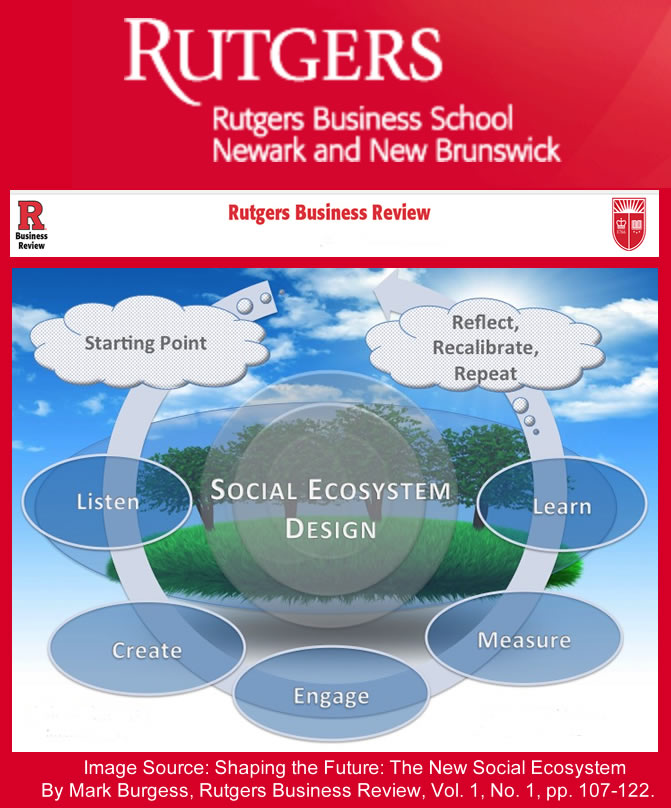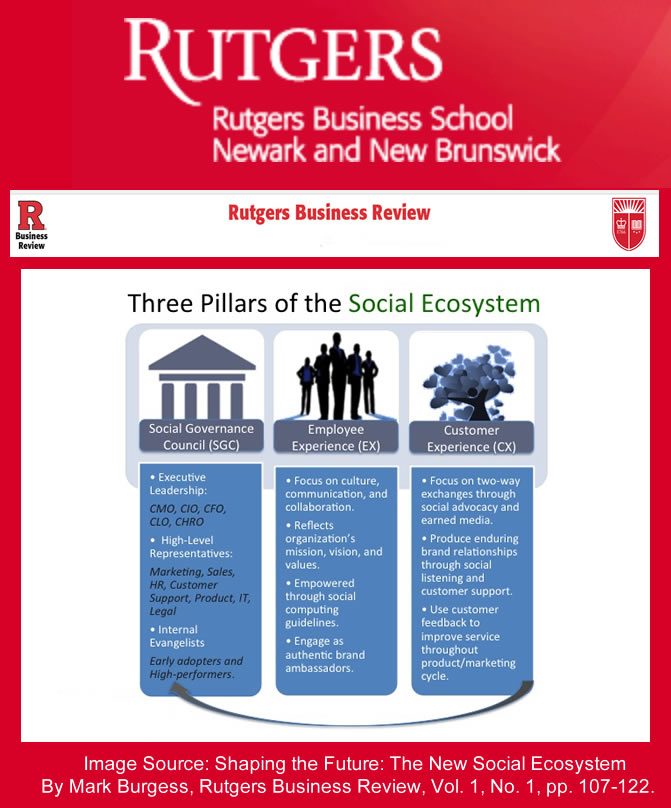 Sometimes it feels like the business world has been in one long, seemingly unending state of self-reflection over the last few years. During this prolonged period of organizational rumination, members of the C-Suite have been far more likely to ask questions like “Is my company prepared to meet the social business revolution head on?” or “Are we prepared to build the kinds of thriving, engaged social employee cultures necessary to ensure the adoption of new technology and processes?”
Sometimes it feels like the business world has been in one long, seemingly unending state of self-reflection over the last few years. During this prolonged period of organizational rumination, members of the C-Suite have been far more likely to ask questions like “Is my company prepared to meet the social business revolution head on?” or “Are we prepared to build the kinds of thriving, engaged social employee cultures necessary to ensure the adoption of new technology and processes?”
These are good questions, to be sure. But in their scramble to meet the changing demands of both their organizations and the marketplace, executives often forget to ask what their own roles are in this process. Put simply, the first question any member of the C-Suite should ask is, “Am I a social executive?”
Well, are you?
What is a social executive?
The social executive catalyzes social business initiatives for technology adoption and social media training, and they do it by working to build a culture of engaged, dedicated social employees. To achieve this, they work to embody a brand’s mission, vision, and values—establishing the why of their brand’s existence as a foundational element of their organization. Further, they are visible to stakeholders and do what they can to keep communication channels open and flowing freely.
New data reinforces the value of this approach. According to a recent MIT survey, in instances where CEOs have shared their vision for digital transformation with their workforce, 93 percent of employees have supported those visions. Unfortunately, only 36 percent of CEOs have had the foresight to share these visions with their workers. This number can improve; sharing a brand vision isn’t the most challenging aspect of going social, but it may be one of the most important.
The cultivation of emotional capital
The social executive invests in their employees by building what the MIT Sloan Management Review refers to as “emotional capital.” The principle is simple, engaged employees who feel they have a stake in the brand’s success work harder and innovate better. Today’s social employees are eager to embrace their brands’ vision for a brighter future, and experts agree that one of the best ways to share that vision is to get employees involved in the process as collaborators and co-creators.
Cisco executives Ron Ricci and Carl Weise considered this process imperative for their own organization. As they wrote in their book The Collaboration Imperative, “What can a collaboration strategy do for you? The time to explore the answer is now. Assign a leadership team to steer your collaboration-building effort. Invite employees from all levels of the organization as well as various functional groups to participate.” Decision-making can be shared in the social business. It is the social executive’s job to facilitate that conversation.
Building trust: The new role of the social executive
The social executive is still be the final word on where their brand is headed, but they draw from a broader knowledge pool, build consensus, and champion the why of any new initiative. More than ever before, they’re in the business of being visible, being accessible, and building brand trust.
And these duties have tremendous value both internally and in the marketplace:
- In a recent Edelman survey, only 43 percent of respondents trusted CEOs as credible spokespeople, and only 18 percent trusted them to tell the truth.
Fortunately, social engagement can dramatically improve this credibility gap.
- In a 2012 BRANDFog survey, respondents were 82 percent more likely to trust a brand whose executives engaged in social media, and
- 78 percent said they would rather work for a company whose leadership was socially active.
Improving visibility by getting engaged may not seem like much, but it can make a world of difference both in what kinds of employees a company is able to recruit and what kinds of influence it can have in the marketplace.
The new job of the social executive is to build cultural connections, to champion the human side of business. Although over two-thirds of executives today still aren’t engaging online, the day is fast approaching where social literacy will be a prerequisite for any job in the C-Suite. So, while many of today’s leaders are still figuring out exactly what it means to be a social executive, when tomorrow’s roll call comes, these leaders will be expected to raise their hands and say, “I am a social executive.”












